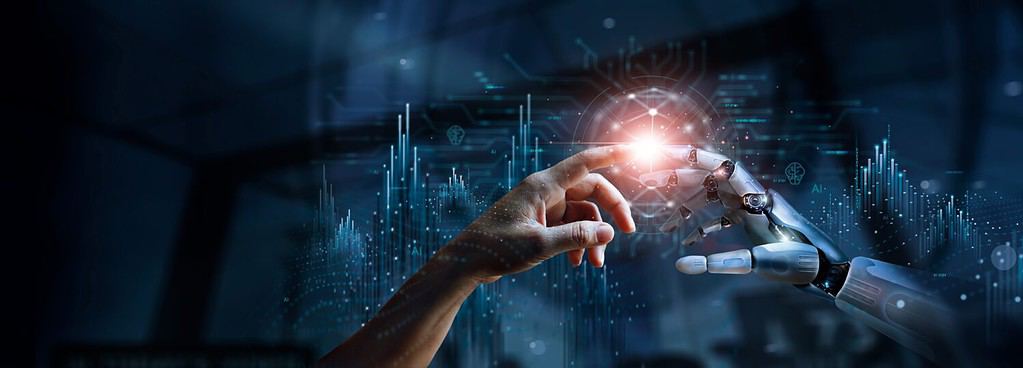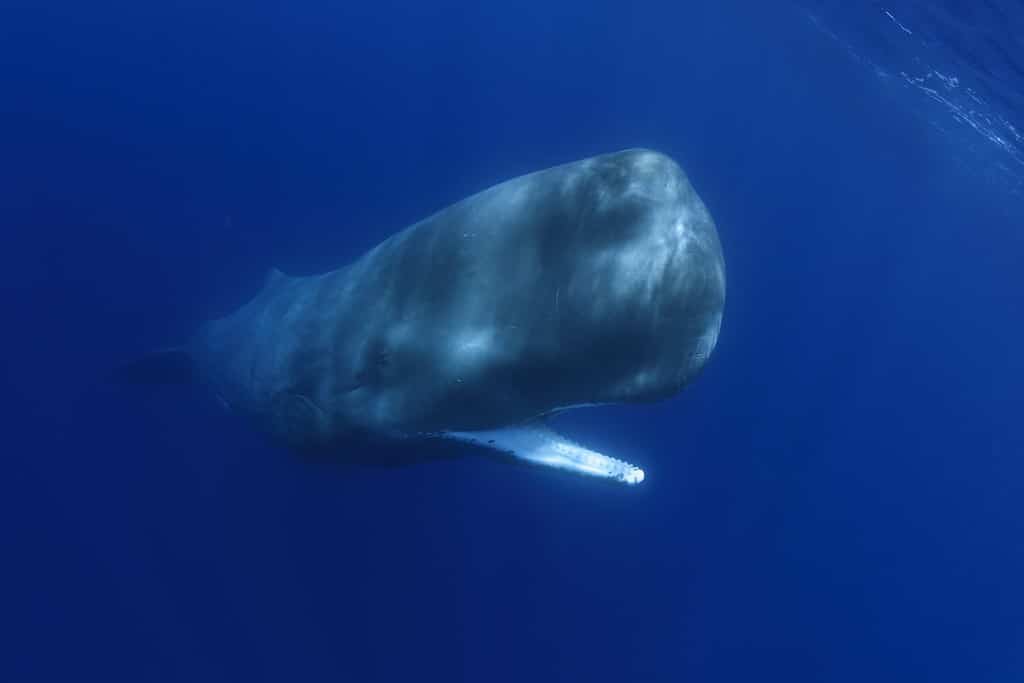Are you an animal lover who wished that when you got home from a long day at work, you could just head to your couch and talk to your dog? But not only that but to understand what your dog is saying back to you. Perhaps Dr. Doolittle isn’t the only one who is capable of understanding animals. Maybe we can, too!
“…animals don’t always speak with their mouths, said the parrot in a high voice, raising her eyebrows. They talk with their ears, with their feet, with their tails, with everything.”
- Polynesia the Parrot, The Story of Doctor Dolittle
Imagine living in a world where we can communicate with our pets, and they can talk back and communicate with us. Well, perhaps we can now with the advancement of AI in our world. Let’s dive into understanding what AI is, how it can help communication between humans and animals, and then finally see the work of those who are already working on this.
What is AI?

AI = Artificial Intelligence.
©PopTika/Shutterstock.com
We’re sure that in some capacity, you have heard someone mention the phrase “AI” in passing. And it seems that in this 21st century, every time we turn around, there is something new popping up that we have to learn. Well, keeping up with technological advancements is key! It doesn’t need to be something we are scared of, but rather to embrace to help us further our love for animals and nature.
“AI is a machine’s ability to perform the cognitive functions we associate with human minds, such as perceiving, reasoning, learning, interacting with an environment, problem-solving, and even exercising creativity.”
It may seem to be extremely intimidating, but it’s not. McKinsey & Company proceeds to explain that you have interacted with AI when you probably didn’t even think you were. You did this by using your smartphone, interacting with your car’s map system, or even asking your speaker to play a certain song. We know that it can help us as humans in our daily lives. So, why shouldn’t it be able to help us communicate with animals?
Can AI Help Animals Communicate with Humans?

©JDW Tog Man/Shutterstock.com
“Scientists have been attempting to learn how to communicate with animals for a very long time, with varying success.” … “But with recent breakthroughs in AI, “people realize that we are on the brink of fairly major advances regarding understanding animals’ communicative behavior,” Rutz says.”
The challenge then becomes to find repetitive sounds that an animal makes and find a way to decode them. Current Biology states that “Generating animal signals is not difficult. We can record and mimic them and even generate new ones. Generative AI models, for example, generative neural networks, can already mimic animal communication pretty well.”
They go on to describe that we understand AI is extremely intelligent. This is why you can ask AI to draw up artwork like that of Van Gogh, write a well-versed article, or even build schematics to assist you in creating new graphics in your career.
It’s one thing to talk about if Artificial Intelligence can help animals and humans communicate with one another, but it’s an entirely different thing to be taking steps to make this happen. We see this happening with a variety of groups, such as the Earth Series Project, deciphering things like crow calls. And then also with the CETI organization (or Project AI) with sperm whales. Let’s take a look at how AI can help us understand sperm whales.
Can AI Help When Studying Sperm Whales?

Sperm whales can swim over 20 miles per hour.
©Thierry Eidenweil/Shutterstock.com
Before we can dive into whether AI can help us when studying sperm whales, let’s take a look at what the sperm whale is at first.
Sperm Whale (Physeter macrocephalus) Facts
The sperm Whale (Physeter macrocephalus) of the genus Physeter is an enormous whale that can be found in all of the world’s oceans. The sperm whale weighs anywhere from 35-45 tons (70,000-90,000 pounds). And can reach up to 49-59 feet in length. When we say these are monsters in the ocean, we mean it based on their size!
Sperm whales are carnivores, which means that they eat flesh. They will prey on animals such as squid, sharks, skates, and fish.
Given their enormous size, sperm whales are only hunted by sharks, killer whales, and humans. They are, however, able to live up to 60 years, and that absolutely can be attributed to their size and that few animals will mess with them.
An interesting fact about sperm whales is how they communicate. They are very vocal animals that can make sounds that reach up to 530 decibels. Let’s see if AI can help us determine what those sounds are.
AI and Sperm Whales
The Project Cetacean Translation Initiative (CETI) is a nonprofit organization that is dedicated to deciphering the sperm whale and studying it in all aspects. Here is why what they do matters.
“We’re listening to and translating how other species communicate – starting with the sperm whale. Our mission is simple. 1. Achieve advancements and breakthroughs in interspecies communication. 2. Transform human understanding & connectivity. 3. Share our learnings with the world.”
The CETI team uses things like aerial drones, swimming robots, underwater microphones, and suction cups linked to computers that they use to attach to sperm whales. Using all of this technology and advancement, they can study the sounds these whales make.
They will study things like the sounds these whales make when eating, hunting, mating, and just simply relaxing. Using AI, they will gather all of this information and cross-check their data on the hundreds of other whales they are monitoring.
For further information on this exciting mission underway, check out the TED talk from David Gruber below: “Can we learn to talk to sperm whales?”
Click the Video Below!
Thank you for reading! Have some feedback for us? Contact the AZ Animals editorial team.








